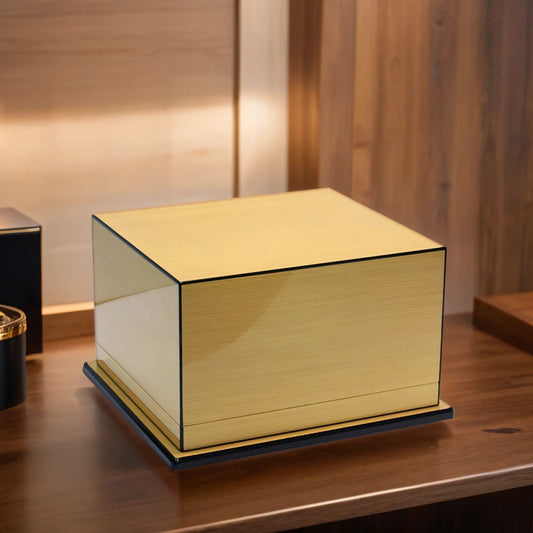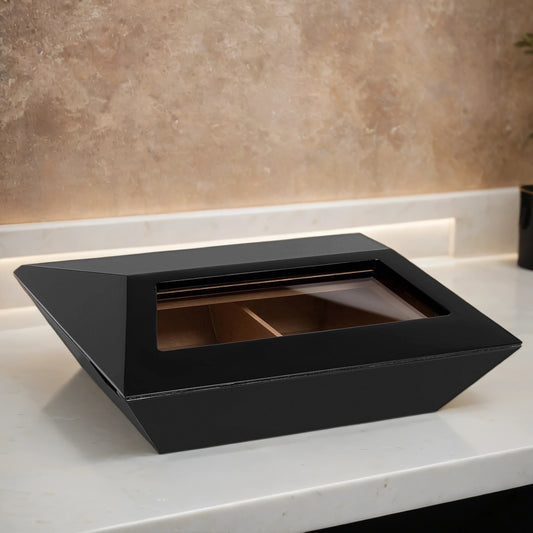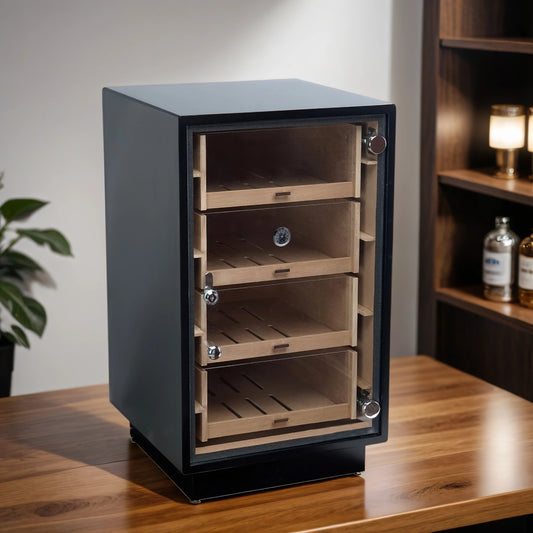
Plume vs. Mold: The Cigar Smoker's Dilemma
Ah, cigars—the epitome of sophistication, relaxation, and a bit of mystery. But nothing throws a wrench into the pleasure of unboxing a fine cigar like discovering it’s covered in a strange white substance. Is it plume or mold? Knowing the difference is crucial for any cigar aficionado, and critical for keeping your cigar humidor in optimal condition. Let’s dive into this topic with a touch of humor and a lot of information.
What is Plume?
Plume, also known as bloom, is like a badge of honor for cigars. It’s a sign that your cigars have aged well and are loaded with rich oils. These oils, over time, crystallize on the surface of the cigar, forming a fine, powdery white layer. Think of it as the cigar equivalent of a well-aged whiskey or a fine wine that’s been perfectly cellared. It’s not just safe—it’s desirable.
How to Identify Plume:
- Appearance: Plume looks like a thin layer of white dust or powder. It’s evenly distributed and can cover the entire cigar or just parts of it.
- Texture: When you gently wipe plume with your finger, it should come off easily, leaving no residue behind.
- Color: Plume is uniformly white and never green, blue, or black.
The presence of plume indicates that the cigar has been stored in optimal conditions, allowing the natural oils to seep to the surface and crystallize. This process can take months or even years, depending on the cigar and the storage conditions. For many cigar enthusiasts, finding plume on their cigars is a moment of celebration, signaling that the aging process is enhancing the cigar’s flavor profile and overall quality.
What is Mold?
Mold, on the other hand, is the unwanted guest at your cigar party. Mold grows in humid conditions, feeding on organic material—in this case, your precious cigars. Unlike plume, mold can ruin the flavor and structure of a cigar, making it unsmokable and, frankly, pretty gross.
How to Identify Mold:
- Appearance: Mold appears as spots or patches and can be white, green, blue, or black. It often looks fuzzy or slimy.
- Texture: Mold doesn’t wipe off easily. It may leave a stain or mark on the cigar.
- Location: Mold can appear on the surface of the cigar, under the wrapper, or inside the humidor itself. If your humidor smells musty, it’s a sign mold might be present.
Mold develops when the humidity in your humidor exceeds 75%. This high humidity creates a perfect breeding ground for mold spores, which can quickly spread and contaminate other cigars. Not only does mold affect the appearance of your cigars, but it can also impart a musty taste, rendering the cigar unpleasant to smoke. Moreover, smoking a moldy cigar can pose health risks, so it’s best to discard any cigars showing signs of mold.

The Smell Test
If you’re still unsure, let your nose guide you. Plume has no odor, while mold typically emits a musty, damp smell. A cigar with plume should smell like rich tobacco and nothing else. If you catch a whiff of something off, it’s likely mold.
Your sense of smell can be a reliable ally in differentiating between plume and mold. Plume enhances the natural tobacco aroma, while mold introduces an unmistakable mustiness. Trust your nose; it rarely lies.
Prevention and Care
Keeping your cigars in top-notch condition requires a bit of TLC. Here are some tips to prevent mold and encourage plume:
- Humidity Control: Maintain your humidor at around 70% humidity. Too much humidity can encourage mold growth. Use a reliable hygrometer to monitor and adjust the humidity levels.
- Temperature: Keep the temperature around 70°F (21°C). Higher temperatures can also promote mold. If your humidor is exposed to temperature fluctuations, consider investing in a temperature-controlled unit.
- Regular Checks: Inspect your cigars regularly. Catching mold early can save the rest of your collection. Make it a habit to rotate your cigars periodically to ensure even exposure to humidity.
- Clean Humidor: Regularly clean your humidor to prevent mold spores from taking hold. Use a cloth dampened with distilled water or a mild soap solution, then let it dry completely. Ensure that the interior surfaces, especially the cedar lining, are free from any residue or buildup.
Proper maintenance of your humidor not only prevents mold but also promotes the formation of plume. A well-maintained humidor is the key to preserving the quality and enhancing the aging process of your cigars.
When in Doubt
If you ever find yourself staring at your cigars, unsure whether it’s plume or mold, err on the side of caution. While plume is harmless, smoking moldy cigars can be detrimental to your health. When in doubt, consult a knowledgeable tobacconist or fellow cigar aficionado.
A trusted tobacconist can provide expert advice and help you determine whether your cigars are sporting plume or suffering from mold. They can also offer tips on maintaining your humidor and preserving your cigar collection.
Conclusion
Distinguishing between plume and mold can be a bit tricky, but with a keen eye and a little know-how, you can ensure your cigar collection stays in prime condition. Plume is a sign of well-aged cigars and should be celebrated, while mold is a sign of trouble and should be dealt with promptly. So next time you spot a white coating on your cigars, you’ll know whether to rejoice or take action. Happy smoking, and may your cigars always be perfectly aged and mold-free!












